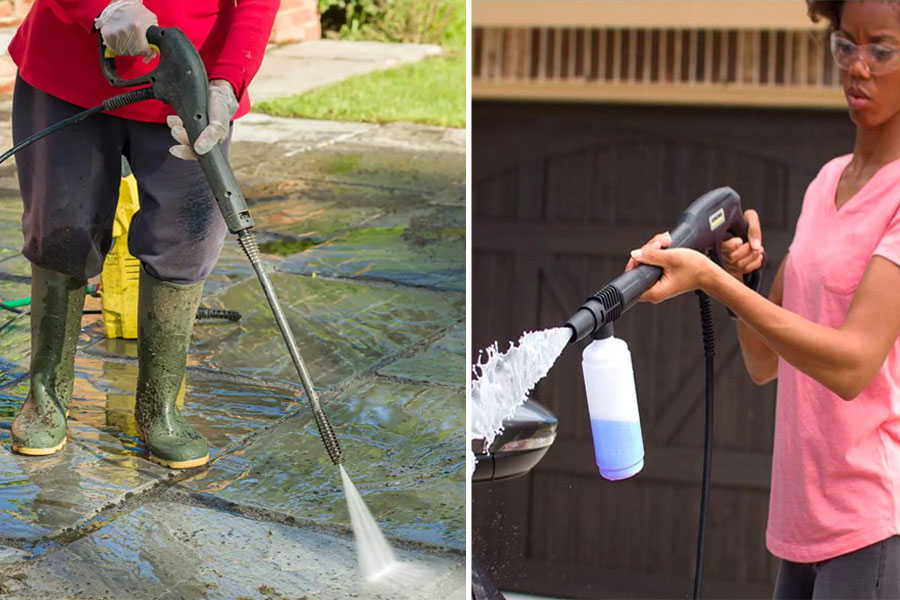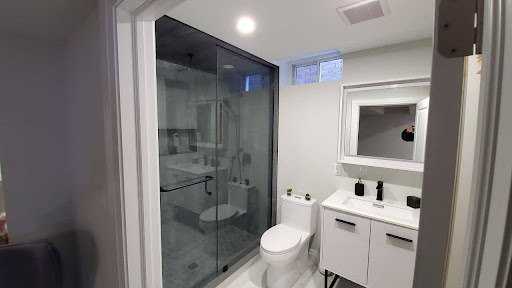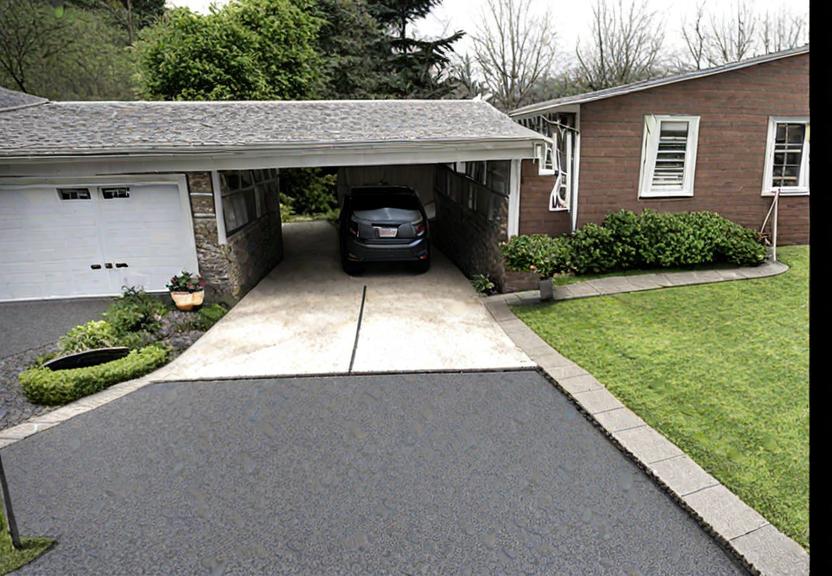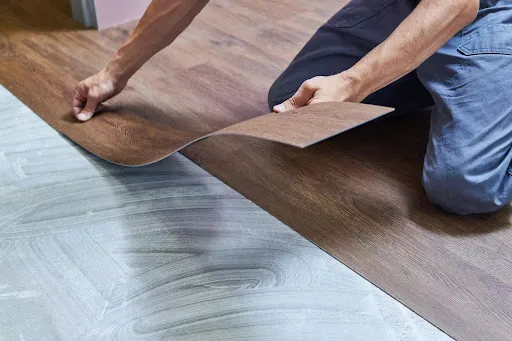Keeping the exterior of your house clean is essential for maintaining its curb appeal and protecting it from dirt, grime, and weather-related damages. Pressure washing and power washing are two popular methods for deep cleaning and revitalizing a home’s exterior surfaces. While they share similarities, understanding the key differences between these methods will help you choose the most suitable one for your cleaning needs.
Table of Contents
Pressure Washing
Pressure washing involves using a high-pressure water stream to clean surfaces such as sidewalks, driveways, decks, and fences. The equipment used in pressure washing is called a pressure washer, which uses regular-temperature water at varying pressures to remove dirt and loose debris. This method is effective for light stains and routine maintenance tasks.
The water pressure and flow rate in pressure washing machines can be adjusted, making them versatile for different applications. However, it is crucial to exercise caution when using high-pressure equipment, as it can cause damage to delicate surfaces such as painted wood or soft brick. Additionally, safety measures, including wearing protective gear, should be taken to avoid injuries and accidents.
Power Washing
On the other hand, power washing is a more heavy-duty cleaning method that uses heated water in addition to high pressure. The combination of hot water and increased pressure makes power washing particularly effective for tackling tough stains, grease, and oil. This method is ideal for preparing surfaces for painting or refinishing projects. It is commonly used in industrial settings and for removing deeply ingrained dirt.
The equipment used in power washing, often referred to as a power washer or hot water pressure washer, can produce higher pressure levels than standard pressure washers. Adding hot water enhances the cleaning power significantly, making it an excellent choice for surfaces requiring more thorough and deep cleaning.
Key Differences
- Water Temperature: The primary difference between pressure washing and power washing lies in the water temperature. Pressure washing uses regular temperature water, while power washing employs heated water. The heat in power washing helps to break down stubborn grime and stains, making it more effective for heavy-duty cleaning tasks.
- Water Pressure: Another significant distinction is the water pressure used in each method. Pressure washing utilizes lower pressure levels for lighter cleaning tasks and routine maintenance. In contrast, power washing utilizes higher pressure levels, making it more effective for deep cleaning and removing tough stains and grime.
- Application Areas: Pressure washing is best suited for less robust surfaces and regular house maintenance. It is an excellent choice for cleaning windows and delicate exterior features without causing damage. On the other hand, power washing is ideal for more durable surfaces and heavy-duty cleaning projects, such as removing oil stains from a concrete driveway or eliminating mold and mildew on a robust deck.
- Cleaning Power: Pressure washing is adequate for general cleaning and removing loose debris, but it may need to be more efficient in tackling deeply embedded dirt and grime. Power washing’s combination of hot water and high pressure produces superior cleaning power, making it the go-to method for handling stubborn stains and ground-in dirt.
When to Use Each Method
Now that we understand the key differences between pressure washing and power washing, let’s explore when it’s best to use each method:
Pressure Washing Scenarios:
- Regular House Maintenance: Pressure washing is an excellent choice for routine house maintenance, such as cleaning sidewalks, driveways, and light dirt from exterior walls.
- Delicate Exterior Features: If you need to clean windows, outdoor furniture, or fragile surfaces, pressure washing is the safer option to avoid potential damage caused by higher pressure.
- Light Dirt and Stains Removal: When dealing with minor stains and loose dirt on your deck or fence, pressure washing is sufficient to do the job effectively.
Power Washing Scenarios:
- Preparing Surfaces for Painting or Refinishing: Power washing is ideal for preparing surfaces before painting or refinishing, as it can remove old paint, stubborn stains, and grime more effectively than pressure washing alone.
- Tough Stains, Grease, and Oil: When faced with oil stains in the driveway or stubborn grease in outdoor cooking areas, power washing’s hot water and high-pressure combination are your best bet for complete removal.
- Mold and Mildew on Durable Surfaces: Power washing is the preferred method for eradicating mold and mildew from robust surfaces like concrete or brick, where higher pressure levels can effectively eliminate these unwelcome growths.
Conclusion
In conclusion, both pressure washing and power washing are valuable methods for keeping your house’s exterior clean and well-maintained. The key differences lie in the water temperature, pressure levels, and cleaning power, making each technique suitable for specific applications.
Pressure washing is the safer and more appropriate choice for routine maintenance and cleaning of delicate surfaces. On the other hand, if you’re dealing with tough stains, preparing surfaces for painting, or cleaning more durable areas, power washing hot water and higher pressure will provide superior results.
Before starting any exterior cleaning project, assess the cleaning requirements of your house and the surface materials involved. By choosing the right method, you’ll ensure a thorough and efficient cleaning process, preserving the beauty and integrity of your home’s exterior for years to come.
Special thanks to D4S Pressure Washing, LLC for the article.





